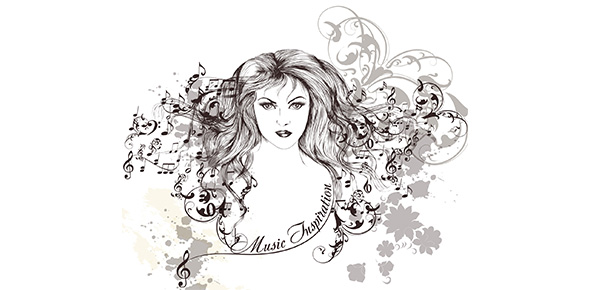Related Flashcards
Related Topics
Cards In This Set
| Front | Back |
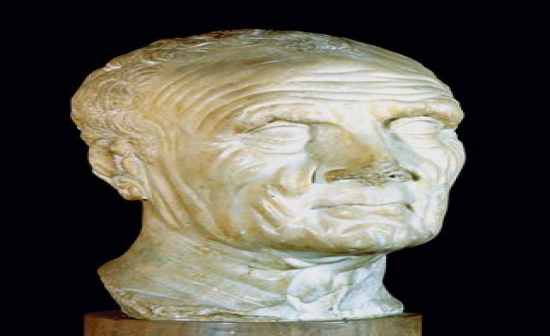 |
Name: Head of an old man
Culture: Roman, Republic Location: Osimo Date: mid-first century BCE Material: Marble, life size Veristic (superrealistic) portraits of old men from distinguished families were the norm during the Republic. The sculptor of this head painstakingly recorded every detail of the elderly man's face. Republic veristic portraits were truly blunt records of individual features or exaggerated types of designed to make a statement about personality: serious, experienced, determined, loyal to family and state. |
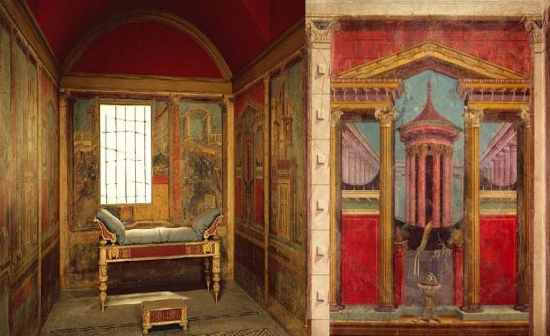 |
Name: Second style wall paintings
Location: Villa at Boscoreale (italy) Date: 50-40 BCE Culture: Roman In this second style bedroom, the painter opened up the walls with vistas of towns, temples and colonnaded courtyards. The convincing illusionism is due in part to the use of linear perspective. In mature second style designs, Roman painters created a three-dimensional setting that also extends beyond the wall, as in a cubiculum. |
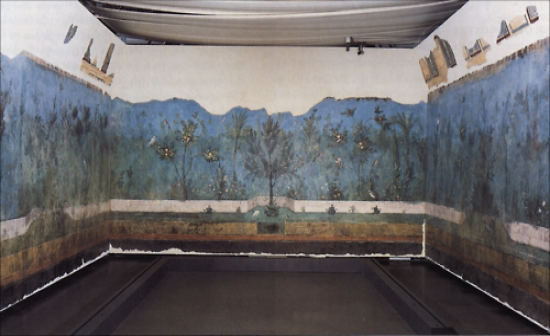 |
Name: Second style wall paintings
Location: Villa of Livia, Primaporta, Italy Date: 30-20 BCE Culture: Roman The ultimate example of a second style "picture window" wall is Livia's gardenscape. To suggest recession, the painted used atmospheric perspective, intentionally blurring the most distant forms. Imperial painters decorated all the walls of a vaulted room with lush gardenscapes. The only architectural element is the flimsy fence of the garden itself. |
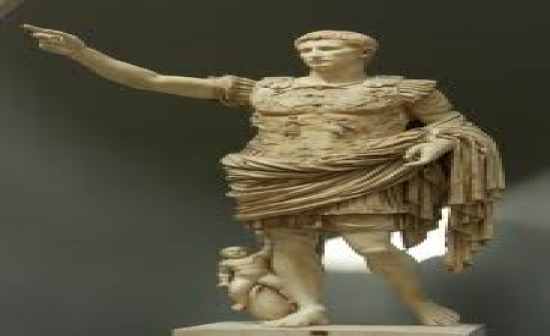 |
Name: Portrait of Augustus
Location: Primaporta, Italy Date: 20 BCE Culture: Roman, early empire The models for Augustus's idealized portraits, which depict him as a never-aging god, were classical greek statues. This portrait presents the emperor in armor in his role as general. Augustus, as general, is standing like Polykleito's Doryphoros, but with his right arm raised to address his troops, and his head also emulates the idealized Polykleitan youth's head in its overall shape, the rides of the brows and the tight cap of layered hair. The cupid at Augustus's feet proclamis his divine descent. |
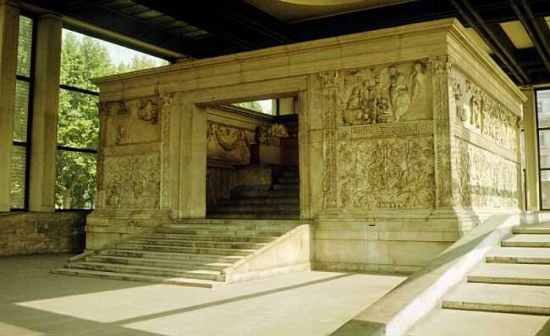 |
Name: Ara Pacis
Culture: Roman-Early Empire Date: 13-9 BCE Augustus sought to present his new order as a Golden Age equaling that of Athens under Pericles. the Ara Pacis celebrates the emperor's most important achievement, the establishment of peace. Figural reliefs and acanthus tendrils adorn the alter's marble precinct walls. Four panels on the east and west ends depict carefully slected mythological subjects, including a relief of Aeneas making a sacrafic and a matron with two lively babies on her lap. |
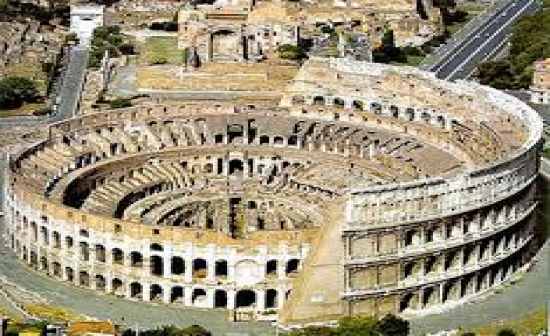 |
Name: Colosseum
Culture: Roman-early empire Date: 70-80BCE Location: Rome, Italy A complex system of concrete barrel vaults once held up the seats in the world's largest amphiteater, where 50,000 spectators could watch gladiatorial combats and wild animal hunts. There is a use of engaged columns and a lintel to fram the openings in the colosseium's facade. The unknown architect mixed Roman arches and Greek columns-Tuscan on the lowest story, then Ionic and Corinthian. Wooden poles help up an awning over the cavea. |
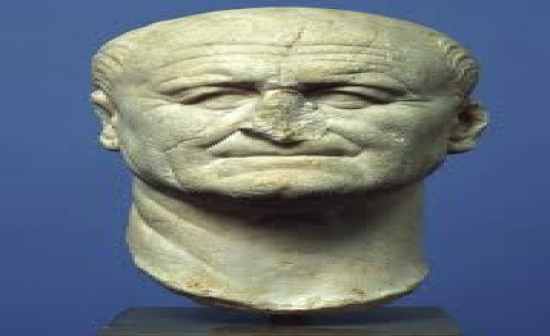 |
Name: Portrait of Vespasian
Culture: Roman-Early empire Date: 75-79 CE Location: Copenhagen Vespasian's sculptors revived the veristic tradition of the republic to underscore the elderly new emperor's Republican values in contrast to Nero's self-indulgence and extravagance. Vespasian's portraits frankly recorded his receding hairline and aging, leatherly skin. |
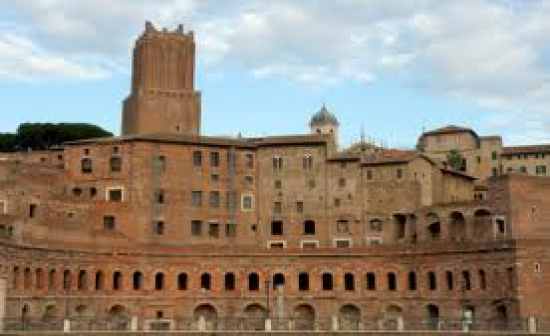 |
Name: Forum and Markets of Trajan
Location: Rome, Italy Architect: Apollodorus of Damascus Date: 100-112 CE Apollodorus built the Markets of Trajan to house both shops and administrative shops. The basic basic unit was a taberna Ia single-room shop covered by a varrel vault). Each taberna had a wide doorway, usually with a window above it through which light entered a wooden inner attic for storage. the shops were on several levels. The great hall of Trajan's Markets resembles a modern shopping mall. It housed two floors of shops, with the upper ones set back and lit by skylights. Concrete groin vaults cover the central space. |
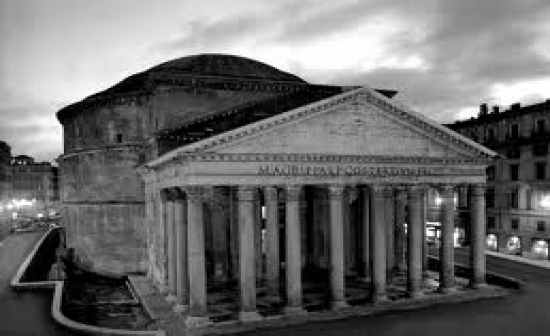 |
Name: Pantheon
Location: Rome Culture: Roman-high empire Date: 118-125 CE The pantheon's traditional facade masked its revolutionary cylindrical drum and its huge hemispherical dome. the interior symbolized both the orb of the earth and the vault of the heavens. The pantheon is the temple of all the gods, and one of the most influential designs in architectural history. The pantheon's interior is a single unified, self-sufficient whole, uninterrupted by supporting solids. It encloses people without imprisoning them, and the light entering throuh its oculus forms a circular beam that moves across the dome as the sun moves across the sky. |
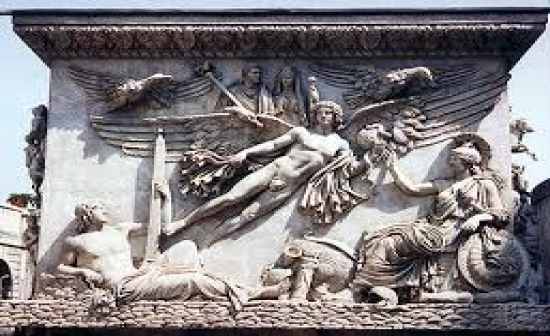 |
Name: Column Base of Antonius Pius
Date: 161 CE Culture: Roman-High empire Location: Musei Vaticani, Rome On on side, there is a relief that illustrates the apotheosis of Antoninus and his wife, Faustina the Elder. This This representation is firmly in the classical tradition iwth its elegant, well-proportioned figures, personifications and single ground lines. The other side is the Antonine decursio relief, breaks sharply with classical art conventions. The ground is the whole surface of the relif and the figures stand on floating patches of earth. New to the pictorial repertoire was the fusion of time the joint apotheosis represents. Faustina had died 20 years before Antoninus Pius and by depicting the two as ascending together, the artist wished to suggest Antoninus had been faithful to his wife for two decades and now they would be reunited in thh afterlife. |
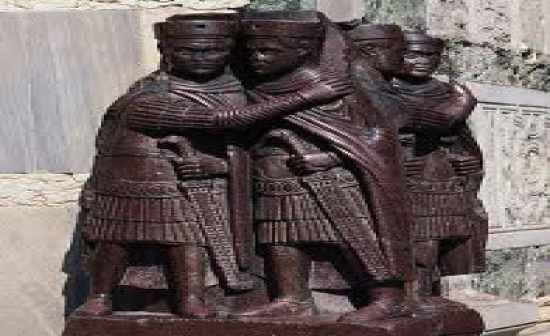 |
Name: Portraits of the 4 tetrachs from constantinople
Location: Venice Date: 305 CE Culture: Roman-late empire In group portraits, artists always depicted the four corulers as nearly identical partners in power, not as distinct indviduals. Each of the four emperors has lost his identity as an individual and been subsumed into the larger entity of the tetrarchy. Each tetrach is claid in cuirass and cloak, with a sword in their left hand and the right hand embracing one another. Diocletian established the tetrarchy to bring order to the roman world. |
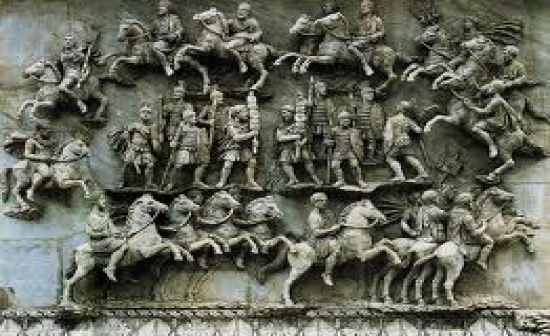 |
Name: Column Base of Antonius Pius
Date: 161 CE Culture: Roman-High empire Location: Musei Vaticani, Rome On on side, there is a relief that illustrates the apotheosis of Antoninus and his wife, Faustina the Elder. This This representation is firmly in the classical tradition iwth its elegant, well-proportioned figures, personifications and single ground lines. The other side is the Antonine decursio relief, breaks sharply with classical art conventions. The ground is the whole surface of the relif and the figures stand on floating patches of earth. New to the pictorial repertoire was the fusion of time the joint apotheosis represents. Faustina had died 20 years before Antoninus Pius and by depicting the two as ascending together, the artist wished to suggest Antoninus had been faithful to his wife for two decades and now they would be reunited in thh afterlife. |
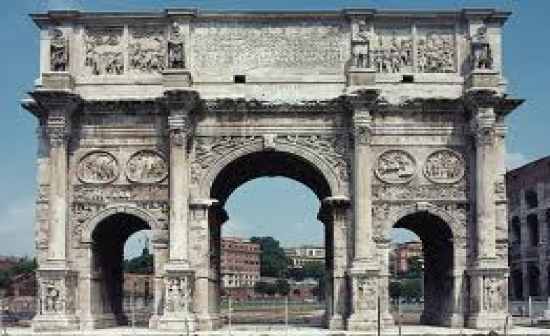 |
Name: Arch of Constantine
Location: Rome, Italy Date: 312-315 CE Culture: Roman-late empire Architect: Constantine Constantine errected a great triple-passageway arch next to the Colosseium to commemorate his defeat of Maxentius. The builders took much of the sculptural decoration from earlier monuments of Trajan, Hadrian and Marcus Aurelus. Sculptors recut the heads of the earlier emporors to substitute constantine's features. |
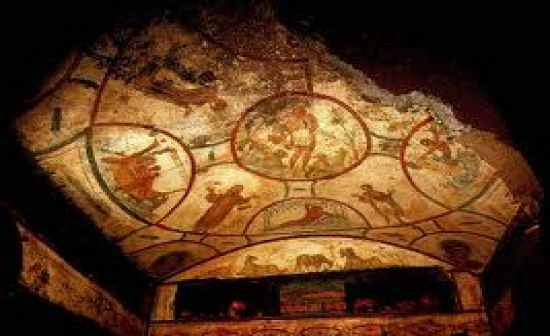 |
Name: Ceiling fresco in the Catacomb of Sts. Peter & Marcellinus.
Location: Rome, Italy Culture: Late Antiquity Date: ea. 4th century This ceiling in a Roman catacomb is similar in format to the painted vaults of some Ostian apartment houses, bu the subjects come from the Hebrew scriptures and the New testaments. This fresco has lunetes (semicircular frames) around the circumference. |
 |
Name: Old Saint Peter's
Location: Rome Culture: Late Antiquity (early christian art) Date: 319 Architect: Costantine Built by Constantine, the first imperial atron of Christianity, this huge church stood over Saint Peter's grave. The building's plan and elevation resemle those of Roman basilicas, not temples. Old Saint Peter's had a wide central nave, with flanking aisles and and apse at the end. A huge marble canopy over an alter, supported by four spiral porphyry columns, marked the spot of Saint Peter's tomb. |




